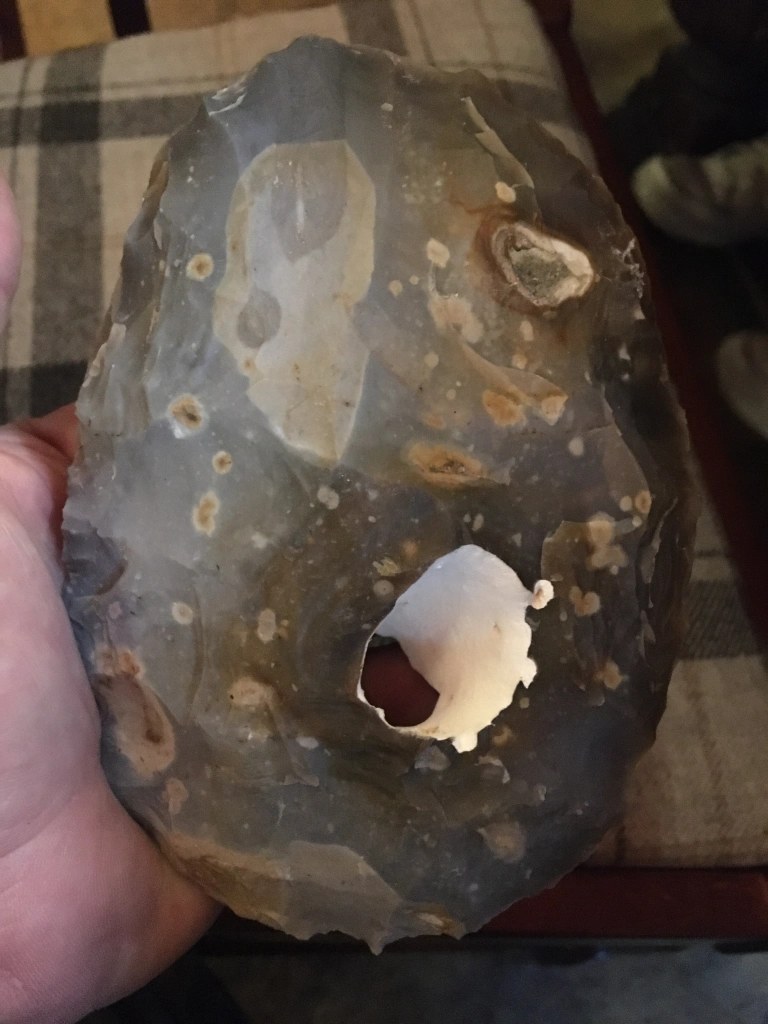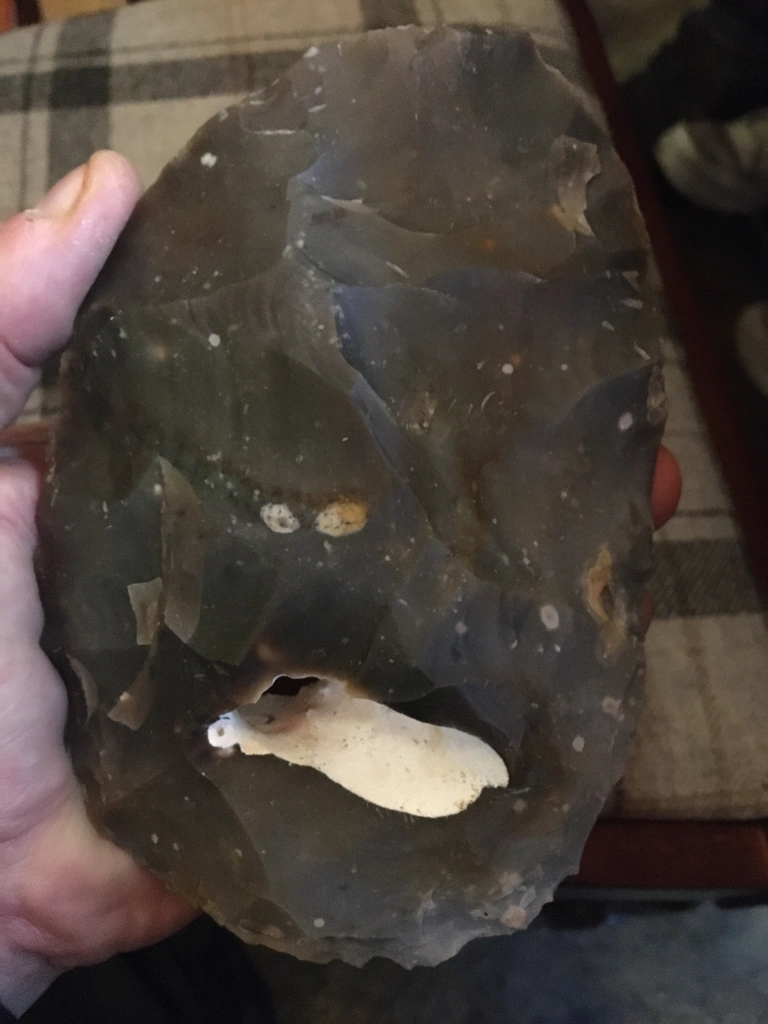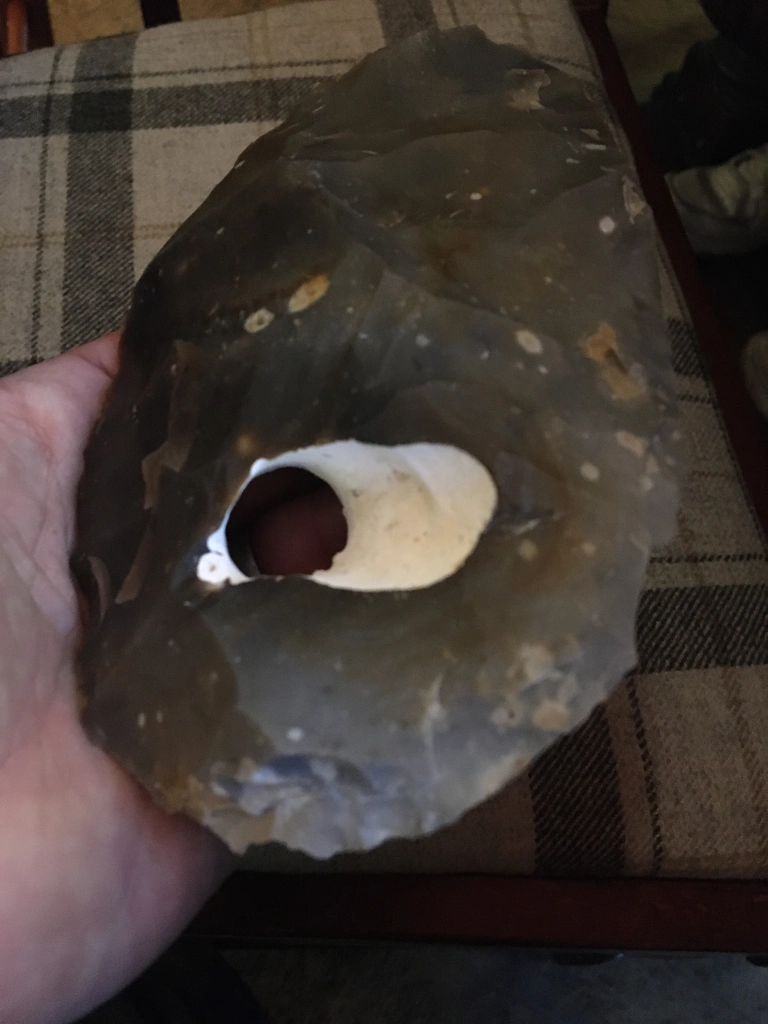We had an excellent handaxe making workshop in the labs yesterday, and I will do a separate post about it when I get some feedback from participants. This post is about one small part of the session. Before the handaxe making started in earnest we watched a ten minute video of an American knapper produce a large handaxe from a flat tablet of Texas chert.

The American knapper was highly skilled and produced a long symmetrical handaxe within something like 25 removals. Impressive. However, I lost interest early on. We had looked at the handaxes in the teaching collection and these real examples were much less refined. In our session we were also using knobbly flint nodules from Norfolk with fossils, holes and differential texture throughout.

The video was a performance of control by a highly skilled knapper using high quality material of an optimum shape and size. The factors being controlled, size, shape, material quality, were exactly those we were negotiating. To me the video was a sales pitch to archaeologists looking for machine like knappers to take part in ‘scientific’ experiments.

However, our exploratory negotiations with less than ideal materials resulted in artefacts much closer to the examples in the teaching collection. The handaxe in the photos was made before the workshop from a large flake with a big hole, small fossil, and course grained sections. My perspective is perhaps related to a current obsession with this brilliant track by the band James, describing the messiness of life and how we engage, make mistakes, change tack, and that we are ultimately, just getting away with it.
Whilst I felt the American knapper’s video was a performance of control, our knapping session was more like the performance of being human, and I loved it.
Leave a Reply